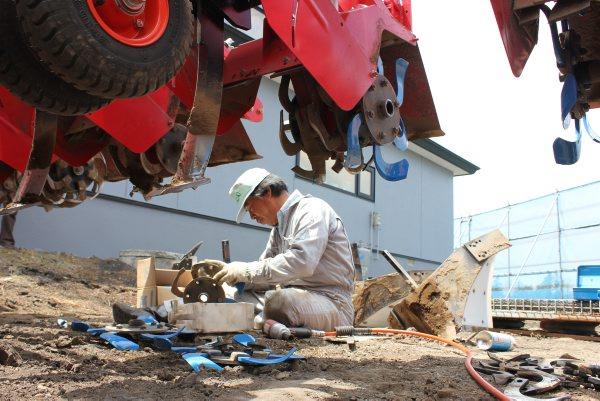Japan is considered to be one of the world’s largest net importers of agricultural products. The country relies on imports for 60% of its food consumption on a caloric basis. About 90% of the wheat consumed in Japan comes from Australia, Canada and the United States.
Rice is the only grain for which Japan is able to meet 100% of its needs. It imports a small amount of rice to fulfill its international trade agreement obligations. Vegetables are grown locally as well as being imported.
Fish plays an important part in the Japanese diet. Meat and milk products are growing in importance and the locally produced Wagyu and Kobe beef is highly valued and commands a premium price. The meat is characterised by fat marbling.
Japan produces most of its sugar needs from the sugar beet crop. Potatoes are another important crop, grown for human consumption and for industrial starch production. The Chinese yam is a high value crop that is exported from Japan, as well as used locally.
However, lack of food production remains a concern in Japan, where global food supplies are changing as some developing countries are limiting exports. The competition for highest quality food from both China and Russia is now stronger. The concern is more than that, with the highest quality tuna-based sushi now being served at tables in Beijing, Moscow and New York rather than in Tokyo.
In March 2000, the Japanese agricultural ministry set a goal of raising food self-sufficiency from 39% to 45% by 2010, but it has since pushed back that target date to 2015. Japan was almost 80% self-sufficient in food in the 1960s.
Japanese companies such as Mitsubishi have responded in other ways. The company has taken over control of Los Grobo Ceagro in Brazil to increase its global grain production potential to 20 million tonnes as it targets grain producers across the world to satisfy the Japanese, Chinese and South East Asia food demands.
Japanese people regularly eat away from home so the food industry is huge. Menus are presented outside of restaurants in plastic look-a-like dishes that are truly amazing. And what you get in the dish is exactly the same.
As well as a thriving catering food sector, the country has over five million vending machines for a population of 127 million people.
The vending machines are ever-present, at road junctions, train stations and along motorway networks. You can never be hungry, while the people don’t show the signs of over-eating.
Farming the poor relation
Farming is considered the poor relation in Japan, which is seen as a world leader in industries such as motor cars and electronics. The Japanese farming population is aging. The average farmer age was 65 in 2009 and the number of farmers has fallen by half since the 1980s. That’s because most farms in Japan are small and family-owned and operated.
Only 12% of Japan’s land is suitable for cultivation. The amount of land being farmed declined from 6.09 million hectares in 1961 to 4.65 million hectares in 2006.
The average farm sizes in Japan are small at 1.9ha (4.7 acres), in 2009, compared with 32.7ha (80 acres) in Ireland. Only 1.7% of Japanese farmers cultivate more than 12.5 acres of land.
Japanese farming is a high-input system. Fertilizer and chemical use is higher than in Europe. They are heavily mechanised, with smaller tractors and harvesters. Irrigation is important whether for paddy fields, where it is essential, or on upland farms, where there is an increasing demand for government-supported irrigation systems.
Farming is heavily subsidised in Japan. Japanese farmers get significant crop price support for potatoes, sugar beet, soyabeans, wheat and barley. The higher the crop yield, the greater the value of the government subsidy.
Farmers get grant aid to buy a tractor. Funding is provided by the state farming bank with preferential interest rates.
Nowadays the small farms are considered to be less efficient than large ones. Japanese reformers want to make it easier to own large farms but land is expensive and slow to come on the market.
The current reforms by Prime Minister Shinzo Abe will include radical proposals to consolidate farmland so Japanese farm sizes can be expected to grow within the next 10 years.
Paddies or upland
Farming is divided into either paddy fields or what is called upland farming. Many of the rice paddies worked by Japanese farmers are small, unevenly shaped and not very suitable for mechanised agriculture. You can see them intermingled with industrial estates, car parks and small housing areas, but always all in small plots.
Upland farming is wider in scale and includes dairying and tillage farming mainly in the northern and more temperate climate of the island of Hokkaido. This region accounts for 20% of Japanese land area and is the source of home-produced milk and meat products.
Life in Hokkaido is considered to be a slower and more relaxed environment for its 5.4 million people. The climate is moderate and can be sub-arctic in the winter months with up to 30cm of snow. Summers are warm and dry and water availability is a growing problem for farmers here.
